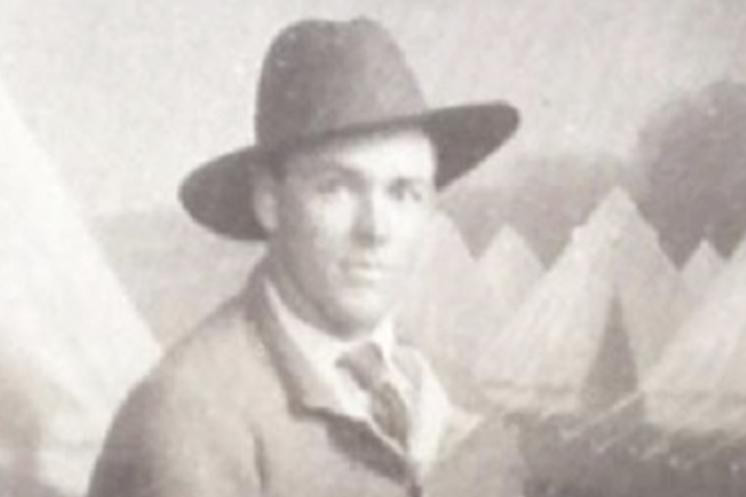General News
2 November, 2024
Veterans' Voices: James Delaney
James Delaney was born in Goroke. His parents were Patrick Delaney of Goroke and Annie Smith.

Before enlisting he was a labourer.
He enlisted on March 17 1916 with the rank of private in 38th Battalion, C Company.
His age on embarkment was 21.
James's regimental number was 863.
He embarked with his unit from Melbourne on board HMAT A54 Runic on June 20 1916.
His rank from the nominal roll at that time was lance corporal.
James disembarked with his unit at Plymouth, England.
James was sent to hospital at Larkhill in the United Kingdom with measles on September 19 1916.
After being discharged from hospital, he proceeded overseas to France from South Hampton on November 22 1916.
James was admitted to 7 General Hospital from the field with mumps on January 23 1917.
On recovery he was transferred to duty at Boulogne on February 13.
James rejoined his unit, 38th Battalion, in the field on February 15.
James was wounded in action on October 12 1917.
He was transferred to 11 Ambulance Train from 2nd Casualty Clearing Station with a gunshot wound to the left arm in the field.
He was taken to 7 General Hospital, St Omer, on October 14.
From there James was invalided back to England aboard HS Newhaven on October 18 and admitted to Cambridge Hospital, Aldershot, the following day.
He was transferred to 3rd Auxiliary Hospital Dartford from Cambridge Hospital.
On November 26 1917 James was discharged from 3rd Auxiliary Hospital to Furlo from November 28 to December 12.
After leave he served with reinforcements reporting to No 4 Com Depot with Training Brigade Hurdcott on February 11 1918.
He proceeded overseas aboard Longbridge Deverill from South Hampton on March 4 1918.
He was marched in to Rouelles, on the Western Front, on March 5 1918.
James rejoined the 38th Battalion in the field on March 12 1918.
He was appointed lance corporal on September 3 1918.
James was wounded in action by gassing on September 29 1918.
He was admitted to 50 Casualty Clearing Station but was transferred to No 21 Ambulance Train.
James died in transit to hospital on October 1 1918 and was buried at St Marie Cemetery Le Havre, Haute-Normandie, France (Block 62, Plot V, Row G, Grave No 4).
He was entitled to the British War Medal and the Victory Medal.
James’s brother Private Thomas Edward Delaney, of 38th Battalion, returned to Australia on April 30 1919.
James’s name appears on panel 129 in the commemorative area of the roll of honour at the Australian War Memorial, Canberra.
Both James and Thomas are remembered in the World War I Avenue of Honour Booroopki and Kowree Shire Honor Board.
Le Havre
During World War I, Le Havre was one of the ports in which the British Expeditionary Force disembarked in August 1914.
Except for a short interval during the German advance in 1914, it remained No1 Base throughout the war and by the end of May 1917, it contained three general and two stationary hospitals, and four convalescent depots.
The port was also one evacuation ports in Second World War in 1940 and towards the end of the war it was used as a supply and reinforcement base.
Use of Gas During WW1
To break the stalemate of trench warfare, one development was that of poison gas.
The first significant gas attack occurred at Ypres in April 1915 when the Germans released clouds of poisonous chlorine.
The gas inflicted significant casualties among the British and Canadian forces at Ypres and caused widespread panic and confusion among the French colonial troops.
The chlorine was a strong irritant on the lungs, with prolonged exposure proving fatal.
The immediate public outcry for retaliation resulted in quick adoption of defensive anti-gas measures including new companies of Royal Engineers responsive to offensive gas warfare.
From 1916 gas was employed in shells instead - this allowed attacks from a much greater range.
Gases used included chlorine, mustard gas, bromine and phosgene.
The German Army was the most prolific user of gas warfare.
Gas did not prove as decisive a weapon as was anticipated but it was effective in clearing enemy forward positions.
Primitive cotton face pads soaked in bicarbonate of soda were issued to troops in 1915, but by 1918 filter respirators using charcoal or chemicals to neutralise the gas were common.
Although only 3 per cent of gas casualties proved immediately fatal, hundreds of thousands of ex-soldiers continued to suffer for years after the war.
It is estimated that as many as 85 per cent of the 91,000 gas deaths in World War I were a result of phosgene or the related agent, diphosgene (trichloromethane chloroformate).
The most commonly used gas in WWI was mustard gas [bi(2 chloroethyl) sulfide].
With thanks: Sally Bertram, RSL Military History Library. Contact Sally at sj.bertram@hotmail.com or call 0409 351 940.